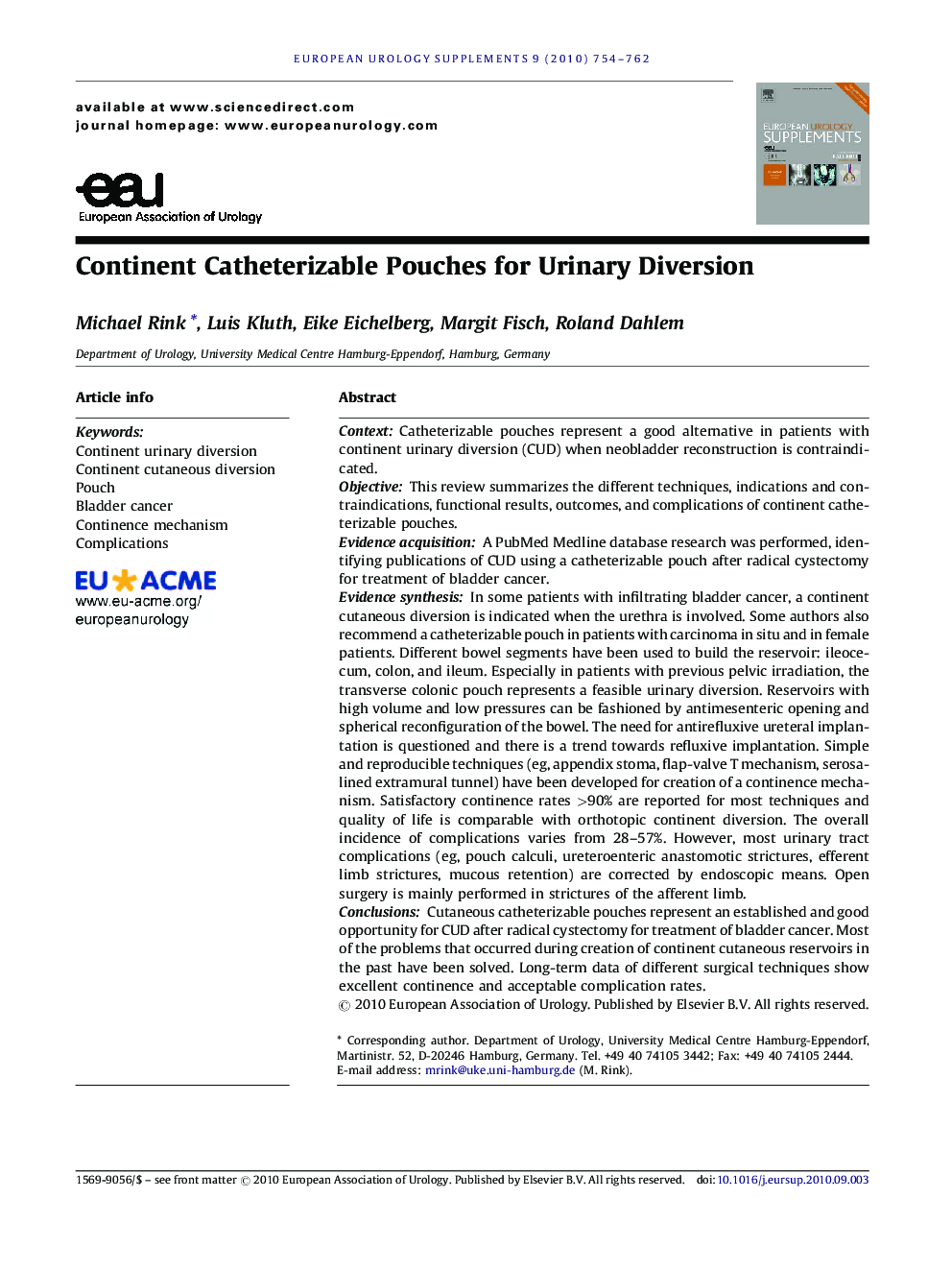| کد مقاله | کد نشریه | سال انتشار | مقاله انگلیسی | نسخه تمام متن |
|---|---|---|---|---|
| 3926028 | 1253141 | 2010 | 9 صفحه PDF | دانلود رایگان |

ContextCatheterizable pouches represent a good alternative in patients with continent urinary diversion (CUD) when neobladder reconstruction is contraindicated.ObjectiveThis review summarizes the different techniques, indications and contraindications, functional results, outcomes, and complications of continent catheterizable pouches.Evidence acquisitionA PubMed Medline database research was performed, identifying publications of CUD using a catheterizable pouch after radical cystectomy for treatment of bladder cancer.Evidence synthesisIn some patients with infiltrating bladder cancer, a continent cutaneous diversion is indicated when the urethra is involved. Some authors also recommend a catheterizable pouch in patients with carcinoma in situ and in female patients. Different bowel segments have been used to build the reservoir: ileocecum, colon, and ileum. Especially in patients with previous pelvic irradiation, the transverse colonic pouch represents a feasible urinary diversion. Reservoirs with high volume and low pressures can be fashioned by antimesenteric opening and spherical reconfiguration of the bowel. The need for antirefluxive ureteral implantation is questioned and there is a trend towards refluxive implantation. Simple and reproducible techniques (eg, appendix stoma, flap-valve T mechanism, serosa-lined extramural tunnel) have been developed for creation of a continence mechanism. Satisfactory continence rates >90% are reported for most techniques and quality of life is comparable with orthotopic continent diversion. The overall incidence of complications varies from 28–57%. However, most urinary tract complications (eg, pouch calculi, ureteroenteric anastomotic strictures, efferent limb strictures, mucous retention) are corrected by endoscopic means. Open surgery is mainly performed in strictures of the afferent limb.ConclusionsCutaneous catheterizable pouches represent an established and good opportunity for CUD after radical cystectomy for treatment of bladder cancer. Most of the problems that occurred during creation of continent cutaneous reservoirs in the past have been solved. Long-term data of different surgical techniques show excellent continence and acceptable complication rates.
Journal: European Urology Supplements - Volume 9, Issue 10, December 2010, Pages 754–762